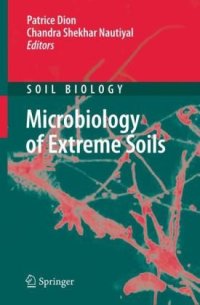
Ebook: Microbiology of Extreme Soils
Author: Patrice Dion (auth.) Professor.Dr. Patrice Dion Professor.Dr. Chandra Shekhar Nautiyal (eds.)
- Genre: Technique // Oil and Gas Technologies
- Tags: Microbiology, Microbial Ecology, Agriculture, Soil Science & Conservation, Ecosystems, Astrobiology
- Series: Soil Biology 13
- Year: 2008
- Publisher: Springer-Verlag Berlin Heidelberg
- City: Berlin
- Edition: 1
- Language: English
- pdf
My auxiliaries are the dews and rains which water this dry soil, and what fertility is in the soil itself, which for the most part is lean and effete. – Henry David Thoreau, Walden Pond The concerns that Thoreau had about his beans were nothing to those that would face a similarly conscientious gardener in the Atacama Desert or on the planet Mars, where dews are rare, or frozen, and rains are extremely rare – or absent al- gether. Yet we live in a time when an appreciation of the differences and simila- ties among soils (or regolith: no organics detected on Mars, as yet!) can provide a perspective on life at its most fundamental level: that of microbiology. Microbes are the Earth’s finest chemists, and most prodigious chemical engineers. Beyond pure chemistry, they know tricks with electrons that would make any Silicon Valley chip designer blush with pride. And yet their size and association with human food (good) and diseases (bad) has for more than a century obscured their essential place in making the Earth a habitable planet for humans. One of the most interesting facets of this book is that we are shown those chemists at work in one of their most important habitats. Soils comprise both a pervasive environment on our planet and one of the most important (even most fruitful!) of habitats with respect to human survival.
This volume provides a comprehensive coverage of the principal extreme soil ecosystems of natural and anthropogenic origin. Extreme soils oppose chemical or physical limits to colonization by most soil organisms and present the microbiologist with exciting opportunities.
Described here are fascinating environments, such as permafrost, saline, arid and geothermal soils, peatlands, subsurface geomaterial rich in sulfidic ore, Martian soils, hydrocarbon-contaminated hot desert and Antarctic soils, as well as fire-impacted, heavy-metal and radionuclide contaminated soils. Those environments lend themselves both to timely descriptions of colonizing organisms and their activities, and to thoughtful examination of community structure and microbial evolution. Extreme soils provide invaluable examples of microbial adaptations in coping with hostile habitats. Being home to a remarkable diversity, they are ideal models for scientific exploration and propose solutions to biotechnology and bioremediation challenges.